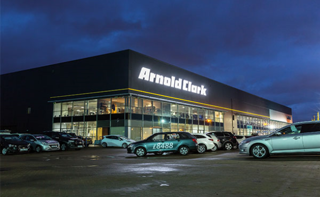Recent figures suggest that we’re finally emerging from the worst period for new car sales in living memory.
According to the Society of Motor Manufacturers and Traders (SMMT), demand for new cars grew 28% in June 2021.
This will be welcome news to dealerships, which spent much of 2020 closed to customers. Pre-pandemic they were already facing multiple pressures, from disruptive online automotive retailers entering the market, to semiconductor shortages holding up the supply chain – so this recovery cannot come soon enough.
But to maintain a competitive advantage, dealers must ensure that they are completely in tune with what their customers want.
Prospective buyers have more choice than ever in terms of how and where they buy. And, while there is still huge value in the personal experience offered by dealerships, there are ways that they can capitalise more on every possible lead.
Spend wisely
As the automotive sector begins to claw back some of the losses it has had to endure, dealerships must examine how and where they are generating interest and whether everything is being done to nurture prospective sales.
The automotive industry is one of the largest buyers of digital advertising in the UK, contributing 13% of all spending. In fact, it’s estimated that there are more than 13,000 dealerships of various sizes in the UK, spending almost £2,000 per month, on average, with Auto Trader alone.
While Google estimates that there can be up to 24 different consumer touchpoints in a car buying journey, the most valuable is a phone call from a prospective buyer.
According to Auto Trader, almost half of new car leads come from phone calls.
Research has also shown that the majority of customers that call a dealership have an intent to buy, and more than one quarter of them actually go on to make a purchase.
That makes every call triggered by digital advertising spend extremely valuable.
But phone calls are still too often underestimated or mishandled.
When prospective customers phone a dealership there is every chance that they are in a position to buy.
Yet it’s at that exact point that people are passed on to other departments, asked to fill in forms to enable data capture or invited to come into the dealership to meet in person.
Evidence shows that sales are lost when prospects are pushed down an alternative route, so staff answering calls have to play their part in trying to convert every caller.
Dealerships need to train staff to understand how to nurture those conversations and the best course of action to take to avoid advertising spend being wasted.
Understand what’s working
Many of us still like to visit a dealership in person before we finally make a purchase. That’s often driven by a desire to see a car up close, or to test drive it.
Before that though, customers will often have completed extensive online research prior to calling the dealership and will have decided on the merits of a purchase before any in-person meeting.
Dealerships need to track the origins of their inbound calls to understand where the customer is on their journey – whether their call has been driven by a specific marketing initiative, an advertising campaign, social media or by a Google search, for example.
By analysing calls in this way, brands can see what is prompting potential customers to contact them and which campaigns and channels are proving most effective.
They can also measure what percentage of calls are generating positive outcomes - or what isn’t working which enables them to pause or reallocate spend.
Know more
Improving the quality of phone calls goes beyond simply tracking marketing initiatives and improving lead conversion rates, however.
Call intelligence tools have the capability to reveal a wealth of knowledge that can flow the other way - to influence future marketing campaigns.
For example, the latest speech analytics tech enables dealerships to monitor the language that prospective buyers are using on calls.
Spotting popular keywords, for example, helps dealers to understand what customers are commonly asking questions about, or to identify any specific terms that are likely to resonate with potential customers or that might inspire them to get in touch.
This insight helps marketing teams to refine the language they use in their campaigns – increasing the effectiveness of their spend, lowering the cost of acquisition and helping to boost ROI.
The automotive sales market is increasingly competitive. Traditional dealerships must focus on enhancing customer relationships and the experiences they offer. But they must also get to know their potential customers better to ensure that every pound spent on advertising is maximised.
The insight is there, to help them capture the interest of new buyers more effectively, to nurture the relationships they have with existing customers and to increase the rates at which they are converting prospects into sales.
Author: Jon Hickey, enterprise sales manager at Infinity

















Login to comment
Comments
No comments have been made yet.